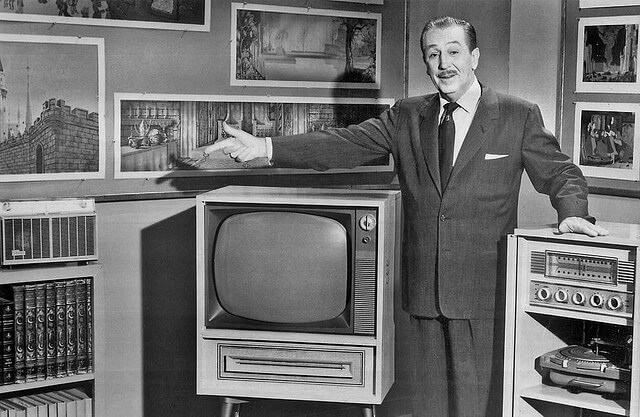
Ask marketers today and they’ll probably tell you that the Internet has made marketing better and more effective than ever.
But has it really?
Sure, we’ve got all the data we want at our fingertips. We can analyse and optimise user experience. We can target segments and advertise to millions of people at a very minimal cost.
All that is great, but sometimes I think we can get so caught up in optimising and analysing that we forget about the traditional marketing fundamentals. We forget that marketing existed before the Internet and that some of it was pretty darn effective.
Here are a few ways we can gain inspiration from traditional marketing to improve our marketing efforts today and in the future.
1. Relationships Were #1
Back in the day, every sale started with a relationship.
Customers weren’t clicks. They weren’t numbers or statistics that could be analysed. They were customers . . . with faces, names, families, stories, and values. These intangible, immeasurable aspects of selling played a larger role than they do today.
The best marketers sought out these intangible elements. They would form relationships by having conversations with customers. They would learn about their stories and their values to better understand what needs could be satisfied.
These days, statistics tell the stories, and metrics tell us how much value certain customers place on certain products. The intangible elements aren’t bothered with.
It’s ironic when you think about it, considering communicating with customers is now easier than ever with social media. Relationships should be stronger, not weaker.
Here are a few steps to take to build better relationships with your customers.
Action Steps:
– Be active on social media and engage with customers.
– Make it a conversation by asking questions and prompting feedback.
– Reach out to individuals to address a problem or just to say thanks for being a great customer.
– Build trust by considering your customers’ needs first and then posting content to satisfy those needs.
2. Pitches Were Perfected (Because They Had To Be)
One.
That’s how many opportunities you used to get to close a sale.
There was no like us on Facebook for more information or visit our website to find answers to your questions or connect with me on LinkedIn so we can discuss this further.
To have success, salespeople and marketers had to constantly be armed with two things: a catchy opening and a killer pitch.
A lot of time and effort went into creating these pitches because they had to be perfect. Otherwise, they’d lose the customer.
These days, we don’t take enough time to create catchy openings and solid pitches, even though they’re just as important.
You may not realise it, but your online marketing efforts are built around “openings” and “pitches,” and how good they are typically determines your success.
What used to be called the “opening” is now referred to as the title tag, and your actual pitch is the meta description.
It’s the same concept. You still have to get the consumer’s attention, and then you have to make them want what you’re offering.
Well-designed title tags and descriptions can help you shoot up the rankings and increase click-through rates.
A door-to-door salesperson wouldn’t hit the neighborhood before perfecting his pitch.
Neither should you jump into SEO without having thought through what you want to say.
Action Steps:
– See how to create catchy headlines from one of our previous posts.
– Include only important information in the description—don’t waste time or words.
– Make sure you’re targeting the right people. Do they care what you have to say?
– Show them you’re an expert. Be honest and back up your claims.
– Always call them into action!
3. Advertising Was Especially Well Thought-Out
Traditional media channels like print, radio, and television were once the only media channels available, and if you wanted to get the word out about your product or service, you had to pay for it.
Today (not including production costs) a 30-second commercial can cost you anywhere from $100 to $25,000, depending on the time of day and the channel. I don’t have the specific rates for back then, but you can bet they were still expensive relative to other costs.
This means marketers had to be especially careful with how they were advertising. They had to make sure they used the correct media channel, were targeting the right audience, and were communicating the right message. Otherwise, one mistake in any of those areas would lighten the corporate wallet.
These days, a poorly executed social media campaign could leave you with fewer followers and some customer backlash, but it’s not going got cost you an arm and a leg . . . unless you do something really inappropriate.
This lower risk has resulted in a lack of attention to detail for many online advertising campaigns, especially involving social media.
The takeaway here is to treat all advertising campaigns with the same care and effort you would if you had to pay big bucks for customers to see them.
Quality is still king, and it will separate you from others in your industry.
Action Steps:
– Make your online content simple, focused, and unique. Be creative, step off the beaten path, and do something different.
– Use Infographics to catch the consumer’s attention and make a point visually.
– Make sure your content resonates with your target audience. Don’t just publish a boilerplate message.
4. Marketing Was More Tangible
Marketing used to be much more tangible than it is today, and there’s something to be said for letting a customer actually hold and touch something with your logo or brand on it.
In 2012, a study showed that 83% of consumers like receiving tangible materials, that 48% would like to receive them more often, and that 58% of customers will keep a tangible marketing item anywhere from 1-4 years.
Placing a physical item in your customer’s hand creates a connection, and these kinds of marketing materials tend to leave a deeper footprint in the brain than virtual materials. They’re more memorable.
The Internet has become the focus of many marketing strategies as of late, and for good reason. It’s a very effective medium, but everyone’s doing it. There’s a ton of white noise, and it’s hard to stand out. Even the best social media campaigns or content marketing efforts can fall to the wayside.
Consider supplementing your online campaigns with tangible marketing.
Instead of giving your contest winner virtual cash, actually send him or her a gift card. Reach out to loyal customers with a handwritten note, not just an email.
Tangible marketing has few limitations, so get creative!
Action Steps:
– Consider budgeting this year for a few tangible marketing efforts to see how your customers respond.
– Always have a focus and a strategy in mind when you’re giving away items.
Final Thoughts
Sometimes it pays to stop and take a moment to look into the past.
While marketing has changed dramatically over the last decade, there are still plenty of old-school marketing principles and techniques we can learn from and apply to our marketing efforts today.
Let’s not use the Internet as a crutch. Instead, let’s use it as a tool to apply proven marketing principles and get even better results.
What do you think? What aspects of marketing were better in the past?
I’d like to hear your thoughts!
Image: Flickr




